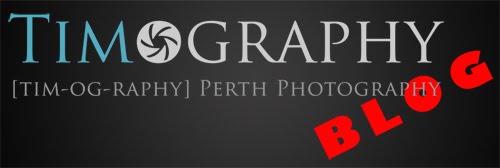
There was a bit of discussion regarding the subject matter we would discuss, and the more we thought about it the more we realised that it would take 4 hours to properly cover all of the topics that are discussed. But rather than bore you all at once with an extended Studio Lighting 101 lecture I thought it was best to keep the ideas shared at a very high level; but we will certainly be drilling down into more detail if future video blog episodes… so stay tuned!
Ok, back to today’s video blog. I’ll try to keep this text short and use it just to supplement the information in the video. Please remember what is discussed in the video is a guide only. The core ideal around photography is creativity. Now I didn’t really get the opportunity to get too creative in this episode, rather I just give a brief overview of “getting started” with achieving a balanced exposure. What you do with it from there is entirely up to you and your own creative genius! So here we go…
Timography Vblog Light Meters from Tim Watson on Vimeo.
1. Use the light meter in your camera! All D-SLR’s on the market today are equipped with their very own ambient light meter which will work just fine for all of your “general” photography requirements – that’s a given. Now there are a stack of things to remember when using your camera’s built in light meter though. The biggest one is that, by default (and there is nothing you can do about it!) the camera’s light meter will try to read every scene you point it at as 18% grey – this is your camera’s way of trying to get the best tonal range in a scene. This doesn’t always work though.
2. The “Sunny 16” rule is great to get you started. Of course the best way to start getting really creative with your photography is to take your camera off the Auto setting and shoot manually. Again you can use your camera’s in-built light meter to good effect here, but remember if you are outside in bright daylight, you will get spot-on exposure if you set your camera to 1/125th second @ f/16.0 using ISO100. Similarly use 1/250th second @ f/16.0 at ISO200, 1/500th second @ ISO 400 and so on.
f/16 – Sunny
f/11 – Slightly Overcast
f/8 – Overcast
f/5.6 – Heavily Overcast
3. Exposure Slide Rules are a handy tool to get you off and running quickly. Obviously they are not going to be spot on 100% of the time – but they will certainly give you a reasonable starting point to get you going.
4. I love my light meter. They are hugely versatile and allow you to get the “look” you are trying to achieve before you take the first image. However – they are so versatile and there are so many things that you can do with one that I think I will keep this text really short otherwise this will turn into a 1000 word essay. Just watch the video and bear in mind that I will be going into more detail in future video blogs.
Also, we didn’t have a model for this video blog to show you what the images would look like, but you can get a fairly good indication by looking at the light coming from the modelling lights, which were set to be proportionally as bright as the flash power setting.
Ok, so I know it is brief but we have tried to take a huge topic and break it down into little bite-sized chunks. Over the next few video blogs I’ll be showing you some more specific lighting set-ups and we’ll incorporate using the light meter into those examples.
That’s it for now – I’m running late to take my wife and son out for the day to the Good Food and Wine Show. I’m a bit of a wannabe chef in my spare time so I’m really looking forward to it… if you’re in Perth I might even see you there!












